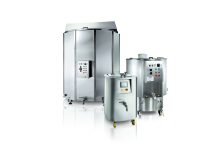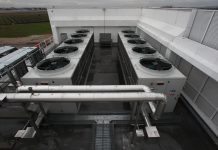by Irina Linorzi
Recent nutritional guidelines recommend a high consumption of fiber-rich foods, from 20 to 40 g per day depending on age, sex and physical conditions: it is estimated, however, that much of the population barely covers half of this demand. These amounts are necessary to ensure proper functioning of bowel and other healthy functions for our organism, such as decreased absorption of cholesterol and lower post-prandial glucose peak, and on the whole, contrast action against overweight and obesity conditions thanks to the sense of satiety they produce and light laxative effect. For this reason, foods that a few decades ago were considered “poor” and of little value, such as wholemeal bakery products with their typical dark color, are now quickly regaining ground and deserving the right appreciation. Nowadays the market of high-fiber or fiber-enriched foods is continuously growing: only for wholemeal food, which represents part of high-fiber food, there are thousands of products, and the marketing of new products has increased from almost 200 in 2000 to over 3000 in 2011 (conference “Whole Grains on Every Plate” 2012, San Antonio, Usa), with an annual growth rate that exceeds the double-digit percentages. Concerning bread, cereals and snacks the portion of wholemeal products stands around 20%, but such percentage is growing also for some products that aren’t usually seen in wholemeal version, such as pizza, breakfast products, soups, frozen foods and even baby food. Obviously “wholemeal” doesn’t refer only to wheat-based products, but also to rice and corn, and “niche” products such as wholemeal quinoa. The use of the outer layer of grains allows producing high-fiber flours (“roughage”), and flours that are richer in proteins, vitamins and minerals than white flours, which contain only the inner part of the grain, consisting almost exclusively of starch. From a chemical point of view, Codex Alimentarius defines fibers as polysaccharides consisting of 10 or more monomer units, not hydrolysable by human intestinal enzymes. Therefore they are long non-digestible polysaccharide chains, or  to be exact, sometimes digestible thanks to some microbial strains of intestinal flora (fermentable fibers). This can lead to positive effects if there is a beneficial microbiota selection and development: in this case fibers are called “probiotics”. According to a recent and widely accepted definition, a probiotic effect is the selective stimulation of the growth and/or activity of a limited number of microbial strains within the intestinal lumen, which confer beneficial effects to the host. According to others, probiotic effects also include some fibers’ ability to reduce harmful bacteria, to reduce intestinal pH, modulate the production of bacterial enzymes, and stimulate the production of short chain fatty acids (SCFA-Short Chain Fatty Acids). Besides being divided into fermentable or not, viscous or not, probiotic or not (Figure 1), fibers are often divided into “soluble” and “insoluble”: the former are generally characterized by shorter chains, that allow them to dissolve in water and sometimes, if the chains are particularly short, they even have a slightly sweet taste. This distinction has important consequences from a technological point of view, because depending on their solubility, fibers will be more or less suitable for some applications. Soluble fibers can be easily integrated into any food preparation so that they can be defined as “invisible fibers”: their presence is able to ensure the beneficial effects of fibers without altering food appearance, color and flavor. This is the reason why they can also serve as texture elements for milk- or fruit-based creams, or even for drinks, without being noticeable on the palate. Insoluble fibers have a more limited range of application: they are generally suitable for bakery products mixed to flour or directly as wholemeal flour: the fibers inside the dough are able to absorb large amounts of water resulting in softer products that maintain higher inner moisture after baking, but they have the disadvantage of releasing some of that moisture if the dough undergoes mechanical stress during processing, resulting in sticky wet dough. Many dietary fibers are used in food technology, starting from the most common, such as cellulose and modified starches. The following are some of the most interesting and more recently introduced fibers:
to be exact, sometimes digestible thanks to some microbial strains of intestinal flora (fermentable fibers). This can lead to positive effects if there is a beneficial microbiota selection and development: in this case fibers are called “probiotics”. According to a recent and widely accepted definition, a probiotic effect is the selective stimulation of the growth and/or activity of a limited number of microbial strains within the intestinal lumen, which confer beneficial effects to the host. According to others, probiotic effects also include some fibers’ ability to reduce harmful bacteria, to reduce intestinal pH, modulate the production of bacterial enzymes, and stimulate the production of short chain fatty acids (SCFA-Short Chain Fatty Acids). Besides being divided into fermentable or not, viscous or not, probiotic or not (Figure 1), fibers are often divided into “soluble” and “insoluble”: the former are generally characterized by shorter chains, that allow them to dissolve in water and sometimes, if the chains are particularly short, they even have a slightly sweet taste. This distinction has important consequences from a technological point of view, because depending on their solubility, fibers will be more or less suitable for some applications. Soluble fibers can be easily integrated into any food preparation so that they can be defined as “invisible fibers”: their presence is able to ensure the beneficial effects of fibers without altering food appearance, color and flavor. This is the reason why they can also serve as texture elements for milk- or fruit-based creams, or even for drinks, without being noticeable on the palate. Insoluble fibers have a more limited range of application: they are generally suitable for bakery products mixed to flour or directly as wholemeal flour: the fibers inside the dough are able to absorb large amounts of water resulting in softer products that maintain higher inner moisture after baking, but they have the disadvantage of releasing some of that moisture if the dough undergoes mechanical stress during processing, resulting in sticky wet dough. Many dietary fibers are used in food technology, starting from the most common, such as cellulose and modified starches. The following are some of the most interesting and more recently introduced fibers:
Dextrins and cyclodextrins: polymers of medium-small size, they are obtained from starch, the former by thermal or acid hydrolysis, the latter by enzymatic conversion. They are soluble fibers appreciated for being flexible-to-use, and also for their health benefits such as the reduction of postprandial glucose response and the improvement of the lipid profile. Thanks to their distinctive circular shape, cyclodextrins are also used to integrate and protect other substances added to foods such as vitamins, antioxidants, polyunsaturated fatty acids, etc. Both can be produced so as to be heat- and pH resistant, adapting to much production processes. Being soluble, colorless, flavorless and poorly viscous, they are also suitable to the beverage industry.

Inulin and fructo-oligosaccharides (FOS): inulin is a dietary fiber consisting of monomers of fructose that well adapts to various uses, not only as texture agent but also as fat replacer and sugar replacer for the growing market of light products. It is present as reserve carbohydrate in many plant species; chicory root is particularly rich in inulin (up to 15-20%), from which it has been extracted since the ‘90s as a food ingredient in various sectors, especially bakery and dairy but also in ice-cream, confectionery and beverages. Besides having rheological properties it is also a healthy vegetable fiber, for its probiotic effects. By partial hydrolysis of inulin, oligosaccharides and FOS are obtained, consisting of few units of monosaccharide (against several dozens that are typical of inulin).
Pea fiber: mainly consisting of pectin, it is obtained from yellow varieties. It is particularly suitable for use in bakery products, giving them soft inside and crunchy outside. Compared to conventional insoluble fibers, pea fibers are able to better hold water and disturb less gluten mesh formation, resulting in higher final volume products. The latter effect can also be exploited for critical applications, such as the partial replacement of almond powder (very expensive) to give typical crispiness to the outer shell of macaroons, or for the partial replacement of expensive thickeners like Guar gum. They can also be used to give texture to fillings of bakery goods, both fruit- and cream-based.
Fenugreek fiber: this is a legume (Trigonella foenum-gracium) whose seeds, aromatic and bitter, have been used for centuries in Chinese and Indian traditional medicine for their antibacterial and anti-inflammatory properties. Seeds also contain high amounts of insoluble fibers (20-25%) and galactomannan gums (20-25%); the latter are mucilaginous soluble fibers very similar to Psyllium fiber and Guar gum. Galactomannans, besides having excellent technological properties compared to other hydrocolloids, possess much fiber beneficial properties including monitoring of blood cholesterol and blood sugar levels, and other metabolic parameters concerning obesity and cardiovascular diseases. They can be used as jelling agents, thickeners, emulsifiers and stabilizers in various food preparations such as cereal-based products, yogurt and other dairy products, and even drinks.
Bibliography
Ktenioudaki A and Gallagher E., Recent advances in the development of high-fiber baked products – Review article. Trends in Food Science &Technology, 2012. 28(1)
Niba L., Progress in fiber-enriched foods. Food Technology, 2012. 66(11)
Roberfroid M et al., Prebiotic effects: metabolic and health benefits. British Journal of Nutrition, 2010. 104(suppl.2)




